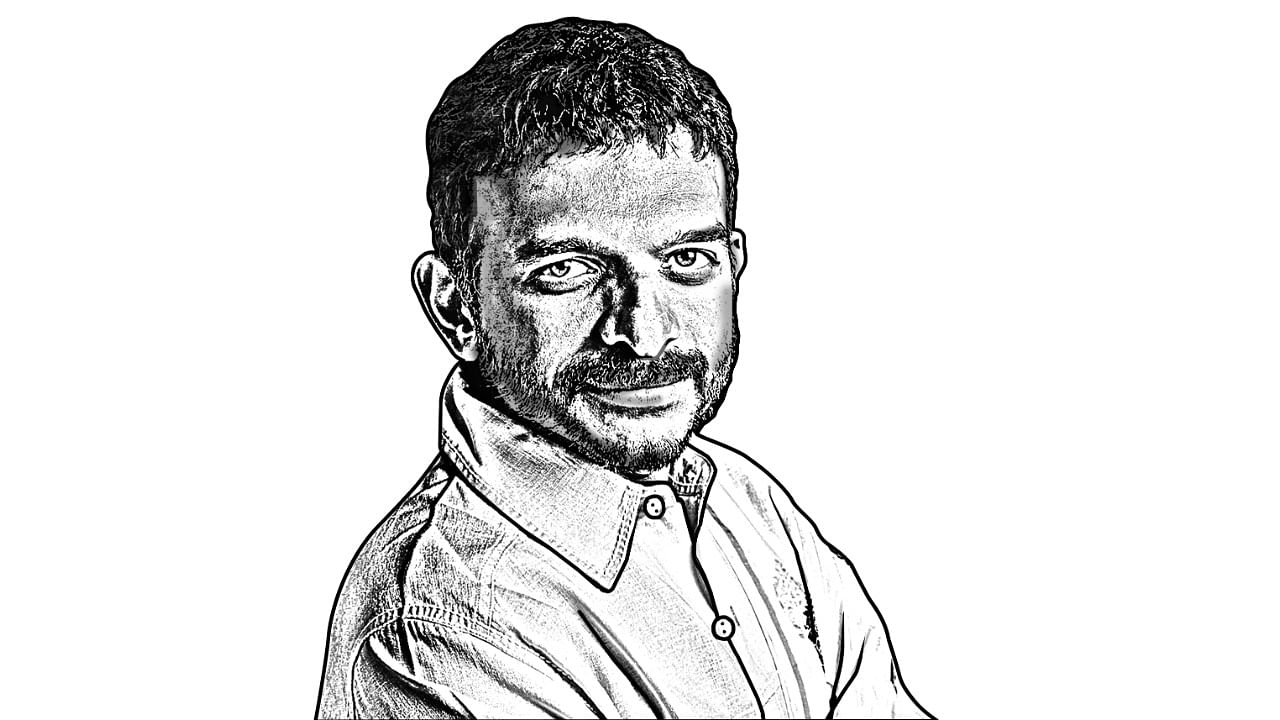
T M Krishna the mind questions, the music moves, the mountains beckon @tmkrishna
Credit: DH Illustration
Over the past few decades, there has been a lot of scholarship on the appropriation of Bharatanatyam by the brahmin community in the 20th century, and discussions on the aesthetic and sociological ramifications of it. In the recent past, Nrithya Pillai -- who belongs to the hereditary artistic community that birthed and nurtured this form -- has been asking very important questions and challenging the current social hegemony through her writing, performance and activism. All this has made the Bharatanatyam establishment uncomfortable and defensive. At the same time, it has created greater awareness among younger privileged practitioners who, I believe, are trying to find their own language to navigate the contradictions between historical and present wrongs and their own practice.
While discussions about the aesthetics of Bharatanatyam are slowly and steadily moving forward, there has been minimal conversation about the impact the side-lining of the hereditary community has had on the music in Bharatanatyam. Because music is inherently nonphysical, momentary and abstract in nature, changes, appropriation and loss go unnoticed. By the time someone points to this past-present rupture, it is too late. Even when mentioned, excuses such as changing times, influences and tastes are provided. None of these tendencies can be separated from the obvious socio-aesthetic disempowerment of the hereditary community -- the people who created the sonic landscape for what we call Bharatanatyam. In the distant past, even the brahmins who were involved in the form as composers worked in tandem with the hereditary community. Severing that relationship has had a deep impact on Bharatanatyam music. With every successive generation, the distancing has widened.
Many caste-privileged dancers who trained under nattuvanars speak of the indescribable character of their guru’s music. They have never been able to articulate its nature. What’s unexplainable is that even as they speak in awe of their guru’s music, their own musical choices for new choreographies is, in my opinion, questionable, even in contradiction with what they seem to admire in their teacher! The first thing that strikes me when I listen to any of the great gurus sing is the entrenched Carnatic-ness.
Is there any such thing? Let me give you a loose analogy. When a Tamilian speaks Hindi, there is an inherent Tamil-ness in the linguistic sound. This quality is not etched in stone; it is a range of accent possibilities. Yet, the Hindi spoken by a Tamilian in 1900 and by a Tamilian in 2023 has a common Tamil base. The same can be said of a Kannadiga or Malayali. Similarly, there is such a thing as Canatic-ness. When I hear the great nattuvanars, nadasvara artists or dancers belonging to the same community sing even a flash of a raga or line, I hear this Carnatic-ness. It is in the way they pronounce the syllable, move the raga, articulate the svara. Even the non-melodic vocables that accompany any musical rendition ooze this quality.
When members of the hereditary community sang ragas that were imported into the Carnatic idiom from other traditions, they found a way of giving it a new existence within the Carnatic. It did not stand out as ‘external’. This is also missing in our singing today. I include all of us, including those who sing Carnatic music concerts. What we tend to do is to imitate the sounds of the raga as heard in its source location. This could also be connected with the sound of Dravidian languages. The brahmin tongue is deeply sanskritised and there is a great degree of dissociation with Tamil as spoken by the majority of Tamilians. The hereditary community, despite their close association with the brahmin class, retain their larger Dravida linguistic identity. This might be one of the reasons why their renditions sound so deeply rooted. Since this is an aural influence and not semantic, it is detectable even in their instrumental music.
These qualities are missing from Bharatanatyam music today, irrespective of the social identity of the singer. What we hear is a kind of aural sanitisation and correctness. Even when an old varnam composed by the Tanjore quartet is presented, there is a mechanisation in its presentation. Musicians use phrases such as “music is in their blood” to explain the difference. These are convenient euphemisms that allow us to ignore this serious problem of aesthetics. It is the intention behind their singing that gives the music that quality. I will hypothesize that in the music rendered by the nattuvanars and dancers from the hereditary community, there is an inherent understanding of the abstract. This allows for a rasa that is not bound by the norms or obsessions of navarasa! This is observable even in the manner they speak about raga, laya or composition. Along with the rigour and attention to detail, there is a non-cultivated carefree-ness. The bhakti-fication and brahminisation of Bharatanatyam has stripped its music of this embracing expanse.
Another aspect that needs investigation is the choice of ragas in dance compositions. If we are to study a wide range of compositions created by the hereditary community, it is clear that ragas were not categorised within lazy, one-on-one emotion-raga constructs. This is a profound realisation of emotionality. We seem to have lost this almost completely. Today, when I hear Bharatanatyam music, the choices of ragas for nearly every context is literal, patterned, strait-jacketed. This has led to subtlety being replaced by vocal exaggerations in the name of emoting. As others have pointed out, the brahmin obsession with arithmetic accuracy -- or in other words, ‘purity’ -- has also diminished the fluidity of the older jathis where laya and musicality, rather than tallying, was the focus.
Exclusion is also an aesthetic phenomenon. Privileged musicians and dancers speak of the “old days” whenever they want to claim antiquity but practice the art in a manner that perpetuates aesthetic loss.